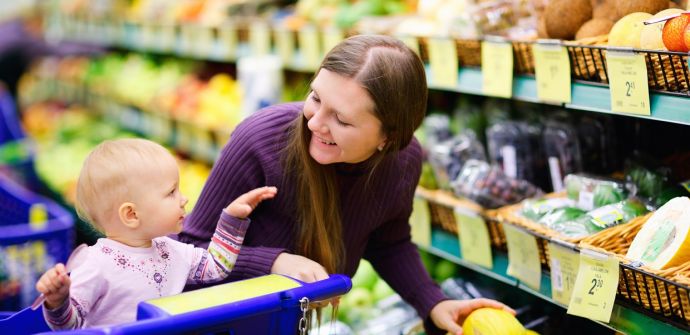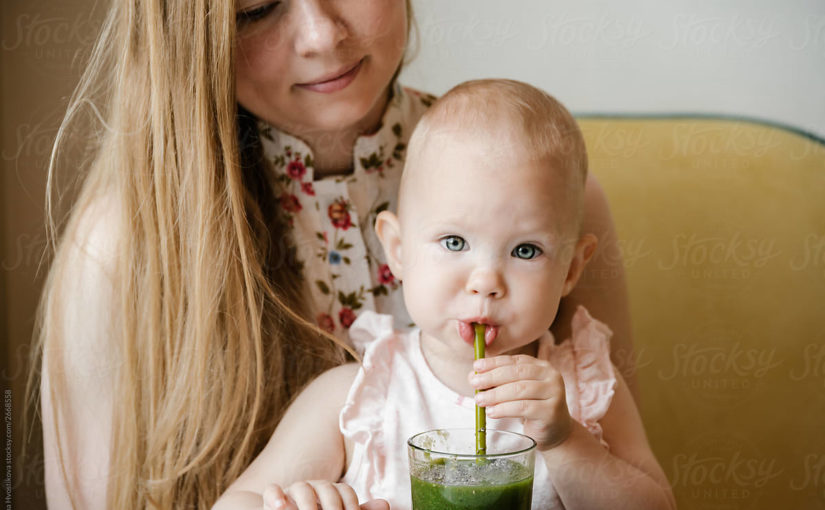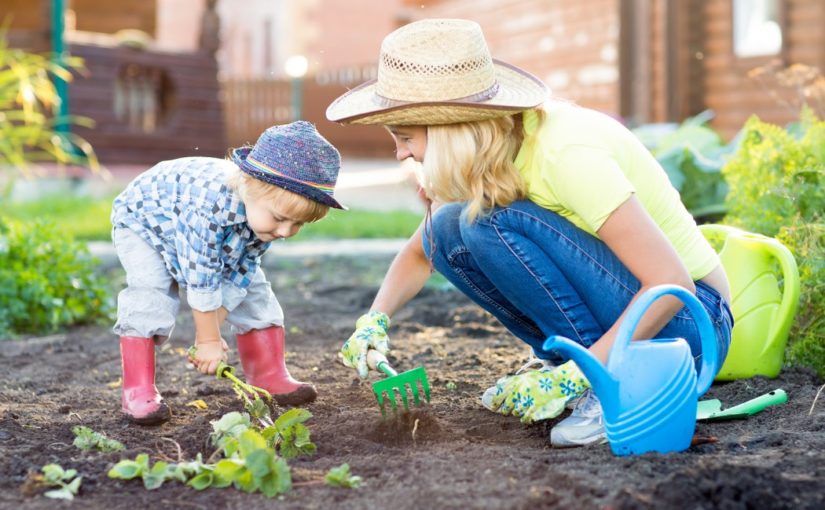For some of us, grocery shopping is fun! For others, one of those tasks we dread. Having a baby or young child with us can make it even more challenging! What if sometimes, we turn it into a fun adventure and learning experience for our children? From a young age, babies can begin to learn about the foods and drinks we can get at the grocery store, as well as, the process we go through. These days, we can get so much more than food there! Here’s an example of how grocery shopping can be a teachable moment. “Up we go, in the cart!” “Let’s see what we need.” “We need more bananas.” “Where are they?” “Here’s the bananas!” When they are old enough, see if they can find them, or hold up the bananas and another fruit and ask them to find them(“Get the bananas” or “Where’s the bananas?”). They are building receptive language this way by identifying them. Whether they choose correctly or not, hold the bananas close to your face so they can see you pronounce the word. Then you can ask them, “Can you say it?” or tell them, “You say banana”. Over exaggerate the word in an almost sing song voice, “ba-NA-na” emphasizing the second syllable or both the second and third. They are learning expressive language this way. Many young children will say “nana” first and that’s o.k. when they are little. Talk to your baby as you shop and label what you are buying. Tell them “In the cart” to describe where the items go. If they are old enough to walk on their own, they can help put the items in and you can ask them each time, “Where does it go?” so they begin to answer “In the cart”, or at least an approximation of the phrase. As you take everything out to put it on the conveyer belt, you can tell them “Out!”, “There it goes, wheee!”. Describe to your baby or young child the items go “In the bag”. If they are older, ask them to help put some “In the bag!”. When you’re done, talk about what you bought and how much fun the adventure was. You can also complete the activity saying “All done!”, “Let’s go home!”. In addition to teaching your child language, grocery shopping can be a good way to introduce or teach them to try new foods. Maybe while putting the groceries away, you can talk about something you can make, or they can help make. One example might be a smoothie-something sweet you can also hide veggies in😉. For more suggestions and information on smoothies, please visit the “EAT” tab. Remember, it is important to do these activities when there is enough time to take your time…..learning is more difficult for everyone if it is rushed!
Words/sounds to include: Names of foods, drinks, or household items, in, out, eat, drink, yum/yummy, cart, beep, more, all done, go, stop, look, etc.







